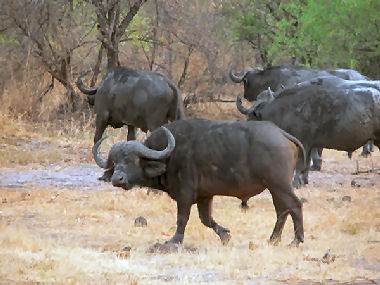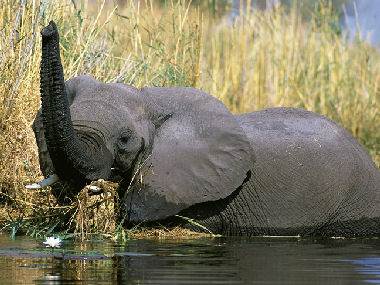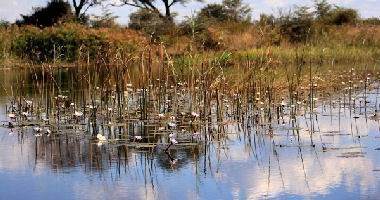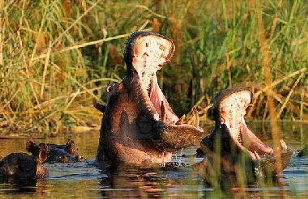BWABWATA NATIONAL PARK

In the Caprivi Namibia
Bwabwata National Park with its three core conservation areas of Mahango, Buffalo and Kwando, form a vital component of the greater regional ‘Peace Parks’ conservation area that will be known as the Kavango Zambezi Trans-Frontier Conservation Area (KAZA TFCA)
The main features are the two rivers forming the western and eastern boundaries along with their riparian forests and floodplains, with a parallel system of mostly dry omiramba running west-north-west, or east-south-east. River-bank vegetation is much the same as the Mahango Core Area.
The area between the rivers has no permanent surface water and consists of deep Kalahari windblown sand forming dunes some 20-60 metres high which support deciduous woodlands.
Bwabwata suffered heavily from poaching during the 70’s and 80’s: however wildlife numbers have recovered significantly since proper management has been implemented. MET has been relocation and restocking and the park is now a source of pride to the nation and a major attraction.
Most mammal species are well represented with roan, sable, kudu, impala, reedbuck, Chobe bushbuck, red lechwe, sitatunga (along the rivers), giraffe, zebra, blue wildebeest, large aggregations of elephant at certain times and buffalo. Hippo and crocodile flourish in the rivers and predators include lion, leopard, cheetah, hyaena and African wild dog.
Both rivers provide breeding habitats for wetland birds such as the endangered Wattled Crane and African Skimmer. Other species such as Pel’s Fishing Owl, African Wood Owl, Western Banded Snake-Eagle, Narina Trogon, Grey-headed Parrot, and Red and Yellow-billed Oxpecker also occur.
A little-known aspect of Bwabwata National Park is the fascinating remains of the SADF occupation in the form of the ruins of bases in the Buffalo and Kwando Core areas and the rusty relics of tanks and blown-out vehicles lying around off the beaten tracks of the park.
Weather Facts: Average annual rainfall is 550-600mm occurring in summer, November-March. The dry season runs from April-October with the coldest months being June-July.
Places to camp: Conservancy campsite.




